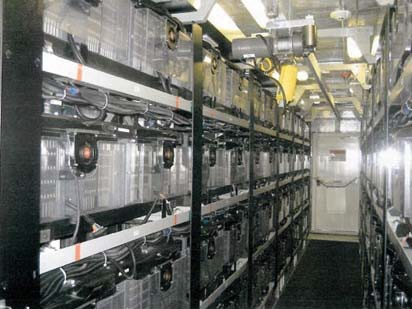Battery Energy Storage Systems
 Renewable energy deployment and policies to modernise electricity production and consumption have propelling numerous advances, including increased battery storage.
Renewable energy deployment and policies to modernise electricity production and consumption have propelling numerous advances, including increased battery storage. Battery Energy Storage Systems play an important role in integrating and accelerating renewable energy deployment. There are four applications in which batteries are deployed to increase the share of variable renewable energy and improve electricity supply reliability.
These application areas are:
- Island systems and off-grid/rural electrification with renewable energy deployment
- Households with solar photovoltaic (PV)
- Variable renewable energy smoothing and energy supply shift
- Fast, short-term electricity balancing in ancillary markets
Battery Energy Storage System and Primary Power Components
The battery is only one part of a larger battery storage system, displayed and described in the figure 1 below.
A battery system makes the energy from a solar and wind plant dispatchable and controllable. When the grid is being used at it’s maximum capacity, the energy from the solar and wind plant can be temporarily stored in the battery system. At a later moment the energy from the battery can be dispatched and sold. At the same time the battery system will help to smoothen short term variations in the energy productions due to changing weather conditions.

A battery storage system contains several primary components, including the battery, monitoring and control systems, and a power conversion system. Cell-based batteries consist of individual cells connected into modules and then into packs. Flow batteries consist of external tanks filled with an electrolyte which flows through a reaction stack. Monitoring and control systems, referred to as the battery management system, ensure safety and maximise performance. The battery management system prevents individual cells from overcharging, and controls charge and discharge of the battery. This is important for safety and performance. Battery cells and component monitoring may vary to some degree, in that different types require emphasis on particular issues. For instance, lithium ion battery packs must emphasise thermal monitoring and controls, given a tendency to overheat. In many of the new devices that are entering on the market, the storage system is also coupled to an inverter to provide one integrated product.

In addition, the system may need to incorporate power electronics to communicate with the area utility and adhere to local grid interconnection requirements. For example, while the majority of conventional electric systems run on alternating current (AC), batteries deliver electricity as direct current (DC). This means a power conversion system is required, which contains bi-directional inverters. The power conversion system in this case converts DC power from the battery to AC power for grid use or site demand With the use of a rectifier, AC flows back to the battery for charging after conversion to DC power (EPRI and DOE, 2013).

Battery management systems are increasingly complex and expensive for larger battery solutions. For example, one new development is the integration of software technologies and tools to allow for remote tracking, control and management of battery storage systems. With up to date information about sun and wind forecasts, the charging level, expected electricity demand and information about the state of charge of other battery systems, it will become possible to optimise and create intelligent demand and supply assets to manage load. For example, in 2008 a 22-foot containers with lithium ion battery storage systems provided 500 kW, while the same container in 2014 can provide up to 2 MW of capacity.
Battery storage can be located at the centralised solar and wind power production site to smooth variable generation output as it is fed into the grid. It can also store excess renewable production for later periods. This process, in which excess renewable energy production is matched to periods of higher demand, is known as energy supply shift. These applications are distinguished from regulation because they occur on the renewable energy production side, storing energy directly generated from the specific renewable energy resource. By contrast, battery storage regulation services operate at the grid level.
Battery Selection
In most reports, a number of key technical features are used to compare different energy storage options. In particular, energy storage technologies are often displayed on the basis of power in MW and/or energy in MWh on the x-axis, set against discharge time (seconds to hours) on the y-axis. Some of the most significant considerations for battery selection are presented in figure 2 and 3.


Some of these considerations relate to the life and performance of the battery, such as DoD, temperature, calendar and cycle life, as well as efficiency and performance requirements. Others are related to the specific location in which the battery is required, such as space limitations, installation infrastructure and ambient conditions. Other considerations are economic. These relate to battery cell and module cost, power component availability and cost, and maintenance costs. Others relate to risks concerning the manufacturer and vendor. Technology and company track record as well as a warranty may be significant criteria to ensure individual product quality and performance and to hedge against the financial cost of defective components. Safety is an important consideration in all situations. Finally, the specific application of storage is affected by the local policy and regulatory environment. This affects incentives, remuneration, interconnection standards and other considerations.






